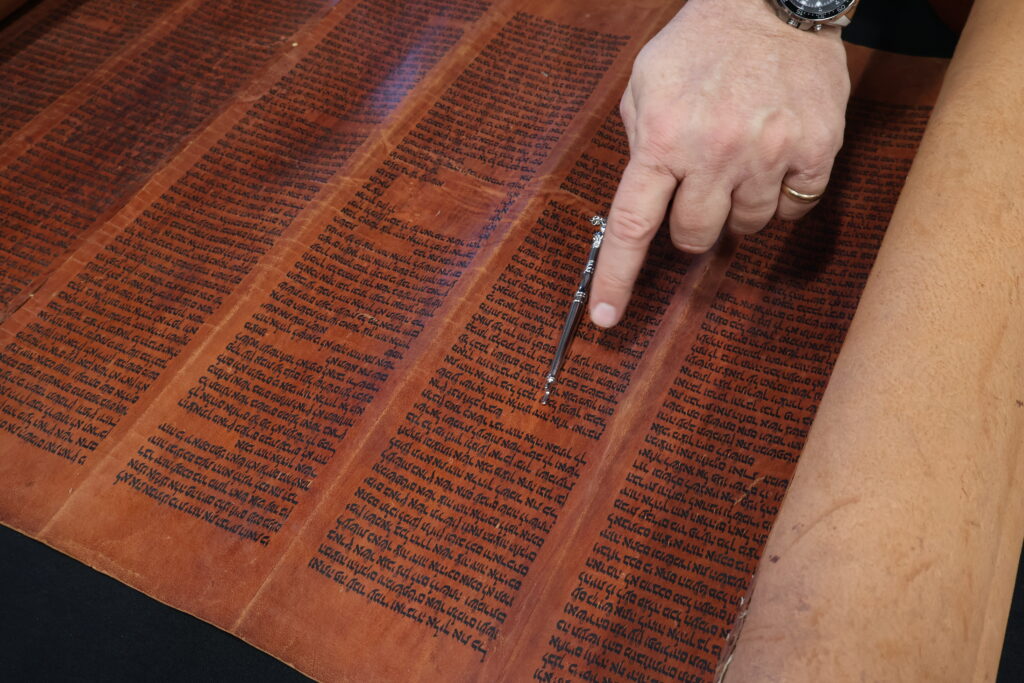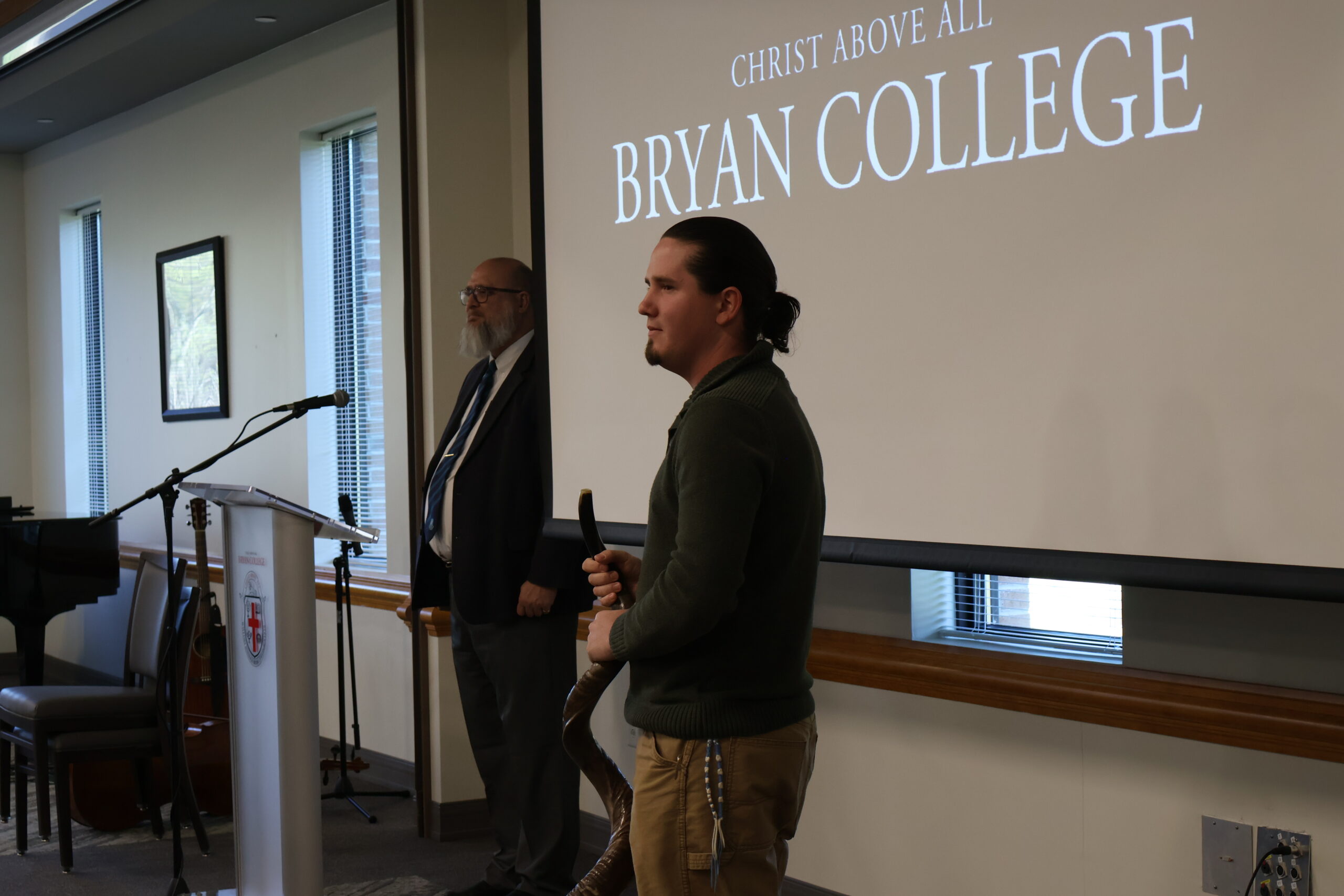Written by Amanda Davis
Dr. Jud Davis, Professor of Greek and Biblical Studies, still remembers the first time that he saw the Torah Scroll. He received a call from Janice Pendergrass, the Associate Vice President for Advancement, on a late Friday afternoon last year. Dr. Davis spent the rest of the day in Pendergrass’s office, unrolling and examining the Scroll. Dr. Davis, who can read Hebrew, read from the Scroll, and even found his favorite verse, which Pendergrass described as very moving.
Dr. Davis had never seen or held a Torah Scroll of this much significance before he came to Pendergrass’s office. He was in disbelief that a gift this unique was given to Bryan.

When Bryan first received the Torah Scroll, it was rolled up in a blanket and was very difficult to unroll. Dr. Davis says that the Scroll is almost perfectly preserved, with much of the writing still being readable.
The Torah Scroll was donated by an anonymous wealthy couple who collected Torah Scrolls, according to Pendergrass. A few years ago, Bryan got a call from the couple, asking them if they would like to receive the Scroll. The couple was giving away Scrolls to Christian colleges that they thought would respect their significance. The Torah Scroll finally found its way home right before Easter last year, after several years of setbacks.
“He actually put it into the mail to us, which was surprising,” Pendergrass said.
According to both Pendergrass and Dr. Davis, the Torah Scroll was written in the early 1800’s in Yemen. Dr. Davis determined that it was written in Yemen due to the way that the letters were drawn. The Torah Scroll is 73.5 feet long and 20.25 feet long. It is written on 45 calf skins. It contains the Pentateuch – the five books of the Bible written by Moses: Genesis, Exodus, Leviticus, Numbers and Deuteronomy. The Torah Scroll has no missing sections and was completed by at least four different authors throughout different eras, with the latest section being completed around 1870. Most of the words are bright and clear, and only a few sections are faded.
The writing of a Torah Scroll is a very delicate process, according to Dr. Davis. It takes over a year to finish one Scroll, and the writing must be perfect. Dr. Davis estimates that a handwritten paper Scroll made in Yemen today would cost between 100,000 to 250,000 dollars.
“For our scroll, it’s not quite what they do with the paper scrolls today, but you can tell that whoever copied it took great care to make each one of the letters exactly the same,” Dr. Davis said.
SimplyBank of Dayton paid for a glass case for the Torah Scroll to protect the Scroll from UV light and keep it well preserved. Bryan ordered the case from Gaylord Archival, a museum supplies company andreceived the case a few weeks before Easter, almost exactly a year from when they first received the scroll.
Bryan held a dedication ceremony on March 29 in Osborne Hall to welcome the Torah Scroll to its new home. The ceremony started with a time of worship, which was followed by a message from Dr. Davis about the shofar. Tate Davis, a student, blew the shofar, and the Scroll was reverently brought into the room by Audrey Heskett, a student, and Dr. Benton Jones. Dr. Mann placed the Torah gently on the table, and Dr. Davis concluded the service with a message about the Torah and Prayer.
Tate Davis was asked to blow the shofar two weeks before the ceremony. The shofar is a horn made from a kosher animal’s horn. It was used as a ceremonial way to praise God by the Israelites during the Old Testament. Davis obtained his personal shofar a year ago, and he practiced hard for the dedication ceremony. Davis says that playing the shofar is very similar to playing a very simple trumpet.
Davis played one long blast during the ceremony, which historically symbolized the coronation of a king. “He’s [Jesus] the Word made flesh, so its symbolic of Jesus coming, so I figured that the symbolism of a coming of a King, or a crowning of a King, was necessary,” Davis said.
The Scroll is currently being displayed in a case on the third floor of the library. Dr. Davis hopes to incorporate the Scroll into his Hebrew classes, and he hopes to take the Scroll out of the glass for the students at least once a year.

Amanda Davis is a sophomore communications major and creative writing minor at Bryan College. She is a Kansas City native and loves reading, writing and photography.




